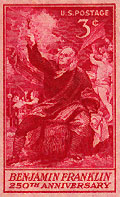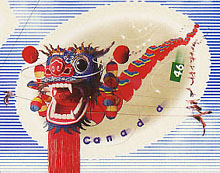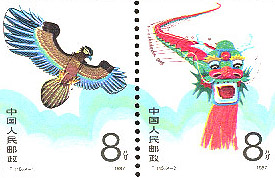
| Aerial Photography James S. Aber |
| Invention | Golden age |
| Renaissance | Related sites |

| Aerial Photography James S. Aber |
| Invention | Golden age |
| Renaissance | Related sites |
| Invention Considerable debate and uncertainty surrounds the question of who was first to take aerial photographs from a kite. The earliest attempt to take aerial photographs was made by Colonel Aimé Laussedat of the French Army Corps of Engineers (Wolf and Dewitt 2000). In 1849, he experimented with kites and balloons, but he was unsuccessful. The first known aerial photograph was taken from a balloon in 1858 by Gaspard Felix Tournachon, later known as "Nadar" (Colwell 1997). He ascended in a captive balloon to a height of several hundred meters and photographed the village of Petit Bicetre, France. Later that same year, Laussedat again tried to use a glass-plate camera lifted by several kites (Colwell 1997), but it is uncertain if he was successful. The oldest surviving airphotos were taken by S.A. King and J.W. Black from a balloon in 1860 over Boston. |  |
By some accounts, the first person to take photographs from a kite was the British meteorologist E.D. Archibald, as early as 1882 (Colwell 1997). He is credited with taking kite aerial photographs in 1887 by using a small explosive charge to release the camera shutter (Hart 1982). Others maintain that kite aerial photography began in France in 1888 (Beauffort and Dusariez 1995). The method was invented there by Arthur Batut, who built a lightweight camera using a 9x12 cm glass plate for the photographic emulsion. The camera was attached to the wooden frame of a diamond-shaped kite and was triggered by a burning fuse.
In 1890, Batut published the first book on kite aerial photography entitled La photographie aérienne par cerf-volant--Aerial photography by kite (translated and reprinted in Beauffort and Dusariez 1995). In that same year, another Frenchman, Emile Wenz, began kite aerial photography. Batut and Wenz developed a close working relationship that lasted many years. They quickly gave up the technique of attaching the camera directly to the kite frame in favor of suspension from the line some 10s of meters below the kite. In this way, the camera could be brought down and reset while the kite remained flying.
The activities of Batut and Wenz gained considerable attention in the press, and in 1895 the first kite aerial photographs were taken in the United States (Beauffort and Dusariez 1995). Thereafter the practice of taking photographs from kites advanced rapidly. The burning fuse was replaced in time by mechanical or electrical triggers, and more advanced kites were utilized. Improved cameras, multiple-camera rigs, various triggering devices, and ingenious suspension systems were tested and patented. The field was rich with innovative apparatus and experimental techniques. In 1912, yet another Frenchman, Pierre L. Picavet (pronounced pickavay), invented a cable-and-pulley system for suspending the camera below the kite line (Beutnagel et al. 1995).

| Golden Age |
The early decades of the 20th century may be considered the golden age of kite aerial photography. At the beginning of the century, kites were the most widely available means for lifting a camera into the sky. Aerial photographs had been taken from balloons since the mid-1800s, but balloon aerial photography was a costly and dangerous undertaking and so was not widely practiced. Meanwhile powered flight in airplanes had begun, but it also was quite a risky way to take aerial photographs. Kites were the "democratic means" for obtaining photographs from the air. Prior to 1914, kite aerial photography was a utilitarian method for scientific surveys, military applications, and general viewing of the Earth's surface. Its reliability and superiority over other methods were well known (Beauffort and Dusariez 1995).
In the United States, George R. Lawrence took remarkable aerial photographs from kites in the early 1900s. His best-known photograph was a panoramic view of San Francisco in Ruins taken in May 1906 a few weeks after a devastating earthquake and fire had destroyed much of the city. Recent controversy has surrounded Lawrence's camera rig, which he called a "captive airship." Some have interpreted this to mean he used a balloon (Beauffort and Dusariez 1995). However, strong historical documentation exists for kites as the lifting means (Baker 1997). Lawrence utilized a train with up to 17 Conyne kites connected by piano-wire cable. The panoramic camera took photographs with a field of view around 130° and weighed 49 pounds. It was suspended in a special tripod device with booms 15 feet long, which weighed 15 pounds--total weight of camera and tripod was ~29 kg. Lawrence used this setup in many locations, and he returned to San Francisco in 1908 to photograph reconstruction of the city.
The most daring method was manned kite aerial photography undertaken by Samuel Franklin Cody in the early 1900s (Robinson 2003b). An American who emigrated to England, Cody made a fortune with his "wild west" show. Cody and his sons began flying kites in the late 1800s. They quickly progressed to larger kites and multiple-kite trains designed to lift a human. Cody experimented with kites and eventually developed a "bat" design, which is a double-celled Hargrave box kite with extended wings. He patented this "Cody kite" in 1901, and it was the basis of his ingenious man-lifting system. He eventually succeeded in interesting the British military in the man-lifting kites, and a demonstration was conducted at Whale Island, Portsmouth, England in 1903. First one son ascended 200 feet and took photographs. Then Cody went up to 400 feet, and finally another son rode up to 800 feet and photographed naval ships in the harbor (Robinson 2003b). Further trials were undertaken in 1904-05, and Cody achieved a record height of 2600 feet for manned kite flight. However, few others followed Cody into manned kite flying, because of the cost and obvious risk involved.
During the period 1910-39, René Desclee became the pre-eminent European kite aerial photographer of his day (Beauffort and Dusariez 1995). His main subjects were the city of Tournai (France) and its cathedral. Over a period of three decades he produced more than 100 superb aerial photographs from kites, undoubtedly the best kite aerial photography portfolio prior to World War II. Desclee's career marked the end of kite aerial photography's golden age. Rapid progress in military and commercial photography from airplanes reduced kites to a marginal role in aerial photography (Hart 1982), and kite aerial photography very nearly became a lost art during the 1940s and '50s.
The Kite Aerial Photography Worldwide Association (KAPWA) was founded in 1985 by Michel Dusariez (Belgium) and
David Town (USA). In 1988, a museum to kite aerial photography was dedicated in Labruguière, France, on
the centennary of Batut's invention of the method (Beauffort and Dusariez 1995). Growing interest in kite aerial photography led to launch of the Aerial Eye in 1994. This quarterly newsletter was a publication of the American Kitefliers Association. Unfortunately publication of the Aerial Eye ceased in 1999. In its place, Kiting, the journal of the American Kitefliers Association, began a column in 2000 called KAPtions, which features a kite aerial photographer in each issue. Meanwhile the Japan Kite Aerial Photography Association publishes its Japanese Journal of Kite Aerial Photography, and sponsors an international contest for best kite aerial photograph of the year.
Rapid technical advances will facilitate continued innovation and development of kite aerial photography in the near future. Acquisition, enhancement, and communication of aerial images are now possible in ways that were unimagined only a few years ago. Today hundreds of people pursue kite aerial photography all over the world, from Alaska to Antarctica, from Japan to Sudan. KAP's rapid growth during the 1990s will undoubtedly continue into the 21st century with new techniques and novel applications.
Renaissance of kite aerial photography
Renewed interest in kites began in the United States following World War II. Aeronautical engineering was applied to kites, parachutes, hang gliders, and other flying devices. For example, the Flexi-Kite designed and built by Francis and Gertrude Rogallo in the late 1940s was the inspiration for many modern kites as well as hang gliders (Robinson 2003a). Sport flying of model rockets, radio-controlled airplanes, and kites became very popular. Meanwhile early photographs by astronauts and satellite images provided space-based views that inspired a new appreciation of the Earth's beauty as seen from above. Kite aerial photography began to make a slow but definite comeback during the 1970s and '80s, particularly in the United States, Japan, and western Europe.![]() Related sites
Related sites

References
Last update: Jan. 2008.